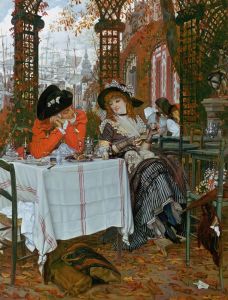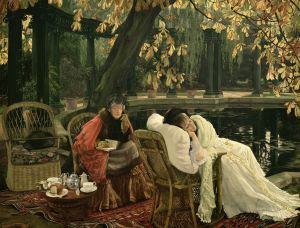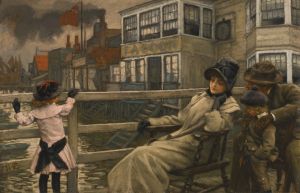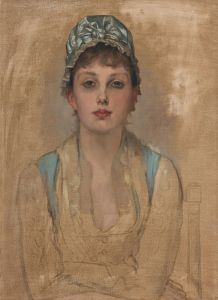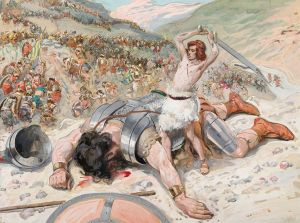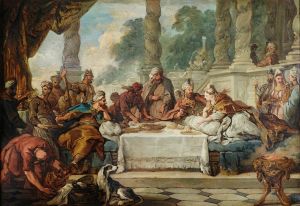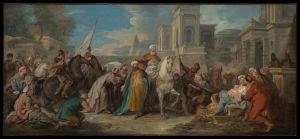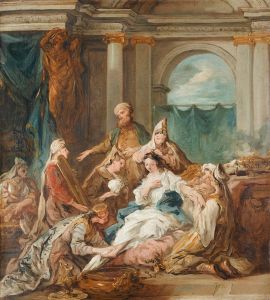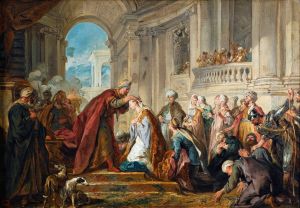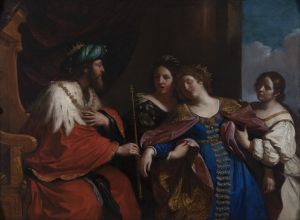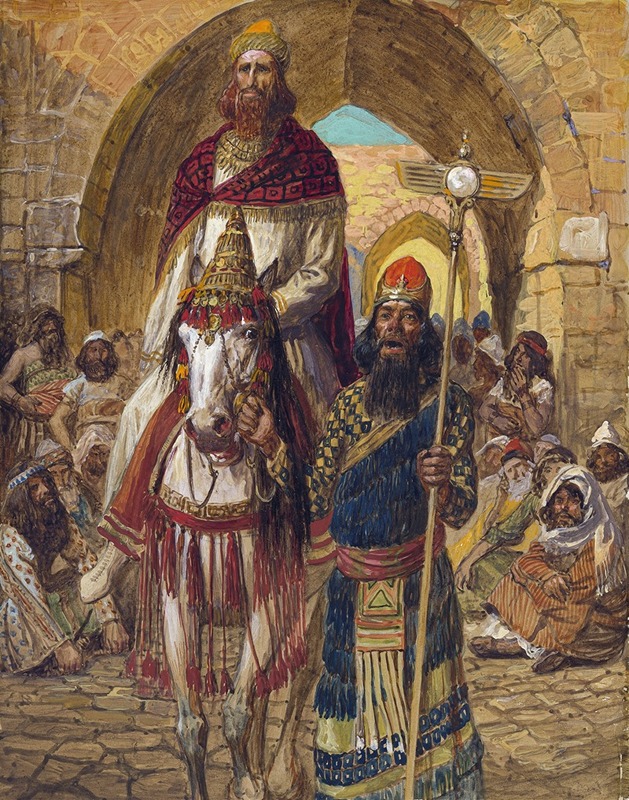
Mordecai’s Triumph
A hand-painted replica of James Tissot’s masterpiece Mordecai’s Triumph, meticulously crafted by professional artists to capture the true essence of the original. Each piece is created with museum-quality canvas and rare mineral pigments, carefully painted by experienced artists with delicate brushstrokes and rich, layered colors to perfectly recreate the texture of the original artwork. Unlike machine-printed reproductions, this hand-painted version brings the painting to life, infused with the artist’s emotions and skill in every stroke. Whether for personal collection or home decoration, it instantly elevates the artistic atmosphere of any space.
James Tissot's painting "Mordecai’s Triumph" is a notable work that reflects the artist's interest in biblical themes, particularly those from the Old Testament. Tissot, a French painter and illustrator, is renowned for his detailed and vivid depictions of biblical scenes, and "Mordecai’s Triumph" is part of his extensive series illustrating the Hebrew Bible.
The painting depicts a scene from the Book of Esther, a narrative that is part of the Ketuvim ("Writings") in the Hebrew Bible and the Christian Old Testament. The story of Esther is set in the Persian Empire during the reign of King Ahasuerus, traditionally identified with Xerxes I. Mordecai, a Jew living in Susa, the Persian capital, plays a central role in this narrative. He is the cousin and adoptive father of Esther, who becomes queen.
"Mordecai’s Triumph" specifically illustrates the moment of Mordecai's elevation and honor in the Persian court. This event occurs after Mordecai uncovers a plot to assassinate King Ahasuerus and informs the king through Esther, thus saving the king's life. Later, Haman, an advisor to the king who harbors a deep hatred for Mordecai and the Jewish people, plans to have Mordecai executed. However, the king, reminded of Mordecai's earlier loyalty, decides to honor him instead.
In the painting, Tissot captures the dramatic reversal of fortunes where Mordecai is paraded through the streets of Susa in royal garments, riding the king's horse, and led by Haman himself. This scene is a pivotal moment in the Book of Esther, symbolizing the triumph of justice and the protection of the Jewish people from their enemies.
Tissot's work is characterized by its attention to historical and cultural details, reflecting his extensive research into the settings and costumes of the biblical era. His interest in biblical subjects was profound, and he traveled to the Middle East to study the landscapes and people, aiming for authenticity in his representations.
"Mordecai’s Triumph" is part of Tissot's larger collection of biblical illustrations, which includes over 350 watercolors. These works were later published in "The Bible" (also known as "The Old Testament") and "The Life of Our Lord Jesus Christ," gaining widespread acclaim for their vivid storytelling and meticulous detail.
The painting, like many of Tissot's biblical works, is executed in watercolor, a medium that allows for delicate and precise detailing, which Tissot uses to great effect. His use of color and light enhances the dramatic tension of the scene, drawing viewers into the narrative.
"Mordecai’s Triumph" is housed in the Jewish Museum in New York City, where it is part of the museum's collection of Tissot's biblical illustrations. These works continue to be appreciated for their artistic merit and their contribution to the visual interpretation of biblical stories.
In summary, "Mordecai’s Triumph" by James Tissot is a significant artistic interpretation of a key moment in the Book of Esther, showcasing the artist's dedication to historical accuracy and narrative depth. Through this painting, Tissot not only illustrates a biblical story but also captures the timeless themes of justice, loyalty, and the triumph of good over evil.





